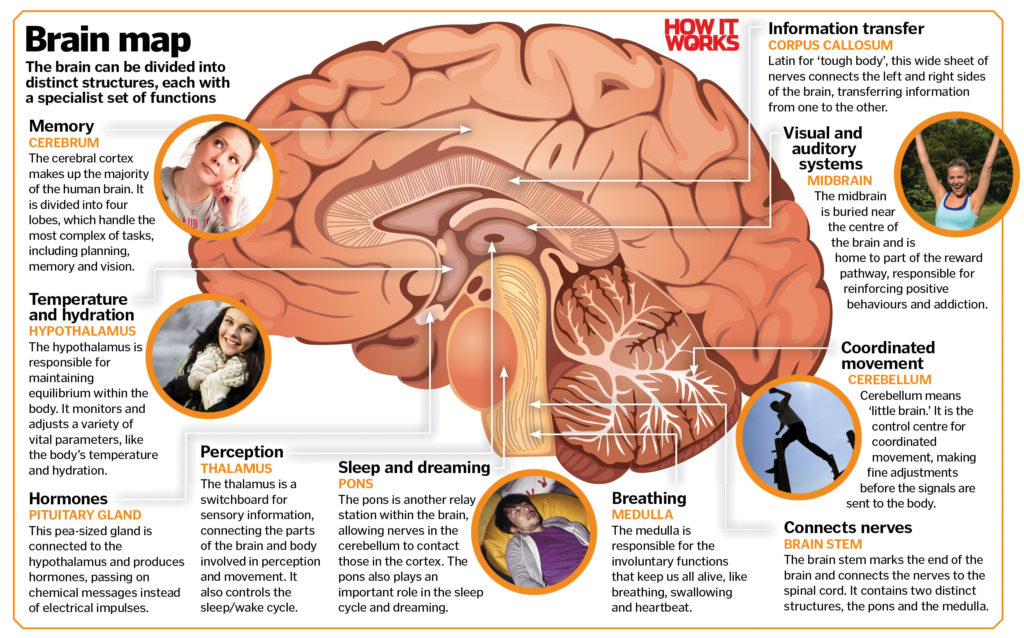How does your brain develop as you grow older?
The human brain is the most complicated structure in the known universe. It has taken hundreds of millions of years of evolution to construct, and over the last seven million years, it has tripled in size. It weighs little more than a bag of sugar, but packed inside it are 86 billion neurones, linked together by over 100 trillion connections in a network more powerful than even the most advanced supercomputers ever built. Read on to discover how your brain developed, and find out what each part actually does…
Baby
In order to fit through the birth canal, human babies must be born well before their brains have finished developing, so their brains grow rapidly in their first years. Experiences prompt the development of new connections between nerves, and by the time a baby is two years old, it has 1.5 times as many synapses as an adult.
Infant
Support cells, known as glia, provide protection, insulation and nutrition for nerve cells. Throughout childhood, they continue to migrate and grow. During the first two to three years of a child’s life, the insulating white matter of the brain begins to form.
Child
By the age of ten or 11, the rapid development of new connections in the brain has ended and a period of trimming and pruning begins. Instead of creating extra pathways, the brain focuses in on the most important, strengthening and insulating those that are used more often and losing ones that are no longer valuable.
Teenager
Trimming and adjusting the brain starts at the back and works forward, and continues on into the teenage years. The prefrontal cortex, involved in planning, judgement and emotional control, is the last to be finished. Teenagers are well known for their impulsive behaviour. Research also suggests that adolescents’ body clocks are wired differently, so teens go to bed and wake up later.
Adult
The majority of growth and remodelling is complete by our early-20s, but new connections continue to form in the adult brain, albeit at a much slower rate than in children. Remaining active and providing the brain with engagement and stimulation strengthens existing connections, and new pathways continue to form as we learn.
Old age
Damage to the brain cannot easily be repaired, so as it ages, signs of wear start to appear. Connections are lost as nerve cells wither, or as debris builds up between synapses, and gradually mental function can decline, leading to age-related illnesses like Alzheimer’s disease and Parkinson’s.

Image credit: ©Future PLC
For more science and technology articles, pick up the latest copy of How It Works from all good retailers or from our website now. If you have a tablet or smartphone, you can also download the digital version onto your iOS or Android device. To make sure you never miss an issue of How It Works magazine, subscribe today!
Plus, take a look at:
What’s the difference between the left and right side of the brain?
Your brain is 60% fact! Plus 4 more amazing brain brain facts





